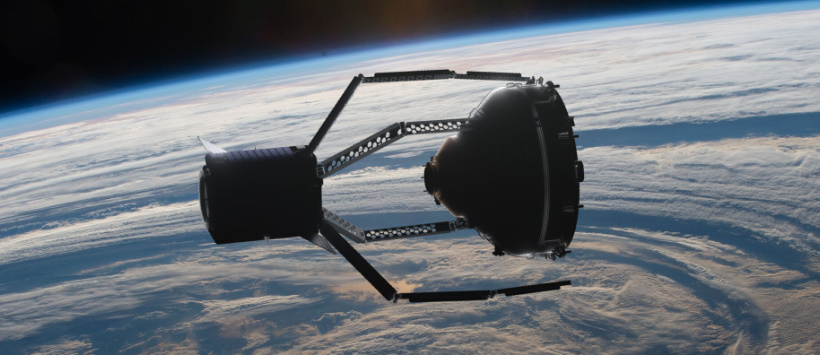Space debris collector
Scientists from the Space Research Center of the Polish Academy of Sciences are involved in building a space claw that will help to remove orbiting space debris, such as defunct satellites and parts of the launch vehicles. The device is designed by the Swiss start-up ClearSpace on behalf of the European Space Agency.

A rendering of the ClearSpace-1 mission. Source: ClearSpace SA
In the future, a huge space claw, developed by the European Space Agency (ESA) and designed by the ClearSpace start-up, will be used to take out the orbital trash. The tool will capture spent rocket stages and satellites that have completed their mission and neutralize them by escorting space debris to a lower orbit.
"The assumption is simple: the robotic arm placed on the satellite will catch the selected space debris, then bring it to a low-Earth orbit and burn a dufunct satellite or part of a rocket in the Earth's atmosphere" – explains Jędrzej Baran, project manager at the PAS Space Research Center.
Currently, PAS engineers are performing experiments in simulated microgravity. The satellite model equipped with a claw is placed on a granite table on which, with the help of air bearings, the tested object moves without friction, as if it was floating on the table. This, in turn, makes it possible to reproduce the conditions of weightlessness prevailing during orbital maneuvers. The granite table belonging to the PAS Space Research Center is one of the few devices of this type in Europe. The analysis of the collected data will allow to detect errors and provide ClearSpace engineers with support at the design level.
"The space claw is to consist of four three-meter arms. Each of the arms has three joints, which allows for efficient maneuvering and gives a greater possibility of catching an object rushing in the orbit. The advantage of this solution is that the required precision is lower than in the case of a space manipulator or a harpoon – the claw captures the entire object, no precise positioning and orbit prediction is needed. The claw is to be mounted on a 120-kilogram satellite. The first tests to intercept a fragment of the Vespa rocket, which has been orbiting the Earth since 2013, are scheduled for 2025,” says Jędrzej Baran.
The Clear Space-1 satellite is supposed to be a suicide robot. It will be launched to grasp the object and take it to the Earth’s atmosphere, where both devices will be destroyed.
Members of the Polish team involved in the SpaceClear-1 mission include: Adam Sikorski, Konrad Aleksiejuk, Tomasz Kowalski, Dr. Tomasz Barciński and Jędrzej Baran from the Laboratory of Mechatronics and Satellite Robotics of the Space Research Center, Polish Academy of Sciences.
Source of information: PAS Space Research Center
